While most online services depend on third-party infrastructure to function, Infomaniak has chosen to be independent by developing its own data centres in Switzerland. This know-how, which is closely linked to our commitment to ecology and confidentiality, allows us to guarantee data sovereignty and to control the security of our solutions from start to finish.
To help you better understand this little-known world, we met up with Infomaniak’s data centre specialists so they could give us a peek at their work.
Data centres are what allows the cloud to exist
When you send an email, publish a website, store files online or watch streaming videos, all that needs a data centre.
Data centres are secret places you’re unlikely to penetrate unless invited to do so. Entering one of them is an exhilarating experience. It’s a universe chock-full of machines, hundreds of them, where the activities of human life are centralised and reduced to ones and zeroes. The heady smell of heated metal, the deafening hum of the servers, the flickering of thousands of LEDs piercing the darkness: it’s something you don’t forget in a hurry.
How does a data centre work?
To answer that question, we went to meet our specialists, who opened the doors of a data centre for us.
Customised installations to ensure the availability of the cloud
After passing the biometric checks, we arrive in the room containing one of the electrical panels of our latest data centre. Like much of the equipment here, this installation’s been customised to meet Infomaniak’s particular specifications. Our installations are all manufactured in Switzerland or in Europe. There are at least two of each, so that the data centre as a whole can function normally even in the event of a major failure. Infomaniak also ensures absolute redundancy by operating several data centres at the same time, in order to be prepared for any eventuality such as an accident or natural disaster.

Electricity and network: a supply that’s guaranteed no matter what
There’s a reason why a visit starts with the data centre’s main low voltage distribution panel. Energy plays a key role.
The electric panel provides the link between the electricity supply (100% renewable) and the servers, via all the equipment in the data centre. The electricity passes through inverters to stabilise and regulate the current. This is then conducted via power rails to the data centre aisles and the power distribution units that power every server rack (shelf). These servers facilitate hosting as well as kMeet, kDrive, SwissTransfer and all of Infomaniak’s other services.

Numerous optical fibre cables provide the networking. The cables all follow different routes to reach the data centre: if one were severed, the others are capable of carrying the increase in load.
Natural ventilation: an Infomaniak USP
Let’s now go up on the roof of the building. Infomaniak has long been developing unique ventilation systems for its data centres. We’ve created a type of roof that’s waterproof but that also lets the air through. Our servers are cooled using only natural air without air-conditioning. The passage of the air passing through the facilities is optimised to permit efficient ventilation. The racks of servers are arranged in hot aisles and cold aisles to optimise the flow of air. The fresh air is drawn into the fronts of the servers to cool them and exits at the back to be ventilated and to create a flow of air.
According to Boris Siegenthaler, Infomaniak’s co-founder, the gigantism of data centres is an absurd phenomenon:
“Centralising so much power in the same place leads to excesses, such as projects that plan to release their heat into the oceans – complete science fiction.”
He advocates decentralising data centres for better integration:
“In our next data centre, the heated air won’t be released into the atmosphere but captured by heat pumps, the heat injected into a district heating system for a residential development. The cold generated by the heat pumps will serve to cool the servers. All the energy will be used in a virtuous manner.”
By using the energy twice, once for the servers and once to heat homes, the data centre is part of a virtuous energy supply system and is in symbiosis with its environment.
Backup power systems
In order to avoid any interruption, you have to plan for the unthinkable. That’s why our facilities rely on redundancy in terms of equipment, location (multiple data centres) and backup solutions.
If our electricity supply fails, batteries kick in to ensure service continuity. These high-performance batteries alone take up one whole room in the data centre. Almost instantly, generators start up to take over and provide the data centre with all the power it needs – for days at a time if necessary.
As a hosting provider, our job is to safeguard the security and availability of users’ data. We work 24/7 all year round to plan for the unthinkable and ensure that our infrastructure is working as it should.
What does a data centre operations manager do?
What exactly goes on in a data centre, which is hidden away from the public eye? What happens if there’s problem?

Even though our data centres can be remotely controlled, they require the know-how of specialised staff to operate them.
“We look for independence wherever we can and at every level,” says Julien Bonnat, data centre operations manager at Infomaniak. He explains: “The people manning these data centres are real enthusiasts. We’re always trying to do things ourselves.” He adds: “We spend innumerable hours testing new optimisations or debating the hardware and the implementation of future data centres.”
Supporting the growth of Infomaniak
We regularly add new machines in line with the growth of our services.
The specialists prepare the racks before filling them with blade servers. To do that, they install power distribution units (PDUs), which they connect to the data centre’s power rails. The PDUs power an entire rack, namely up to 46 servers.
At the same time, the network cables are offered up to the network switch. The team then turns to cable management and connecting the new servers.

Once the servers are installed, our system administrators integrate them into the Infomaniak cloud to power our products, including kDrive, the cloud servers and the audio and video streaming services.
Fulfilling orders, replacing hardware and deleting data
Infomaniak’s data centre specialists also handle everything to do with updating the infrastructure and general management tasks. They constantly log the status of each item of equipment for inventory management, replacement of hard disks and RAM strips, or tracking orders.
We have special equipment for reusing or destroying disks. A “wipe machine” writes random data to disks multiple times to ensure confidentiality. Another machine breaks disks before they are recycled by a local company.
Checking infrastructure reliability
How do we make sure that our servers are always running? We carry out a complete weekly check-up to ensure that every aspect of the infrastructure is in good working order.
This includes, in particular, the indicator lights of all the hardware and the verification of all the filters. We test the power output of the emergency generators, we dismantle the circuit breakers to test them one-by-one, we check the inverters and the functioning of every door, etc. Our tightened maintenance cycles are aimed at detecting anomalies before they become a problem.
Continuously optimising energy efficiency
Energy is precious. We fine-tune the outside air intakes according to the ambient temperature as you would a ship’s sails to the wind. If necessary, during heat waves for example, we cool the outside air using an adiabatic process featuring filters with a honeycomb structure humidified with reused water. These devices, which are unique in Switzerland, allow us to achieve a rare degree of energy efficiency with a PUE below 1.1.
Why design our own data centres?

Data centre design is a very recent activity as measured by the scale of modern history. With our ecological values and as a pioneer in this field, we felt duty bound to lead the way.
Boris Siegenthaler, Infomaniak’s co-founder and head of strategy, says:
“We were first in line because there was no pre-existing technology on which to base our environmental goals. We had to create our own technologies. At the time, setting up a data centre in Switzerland without air conditioning was unheard of.”
As things stand, the only way to achieve our ecological objectives in our latitudes is through our data centres. It’s also thanks to this independence that we’re able to guarantee user privacy and offer a high level of security.
Infomaniak banks on enduring, complete independence

Do you have full control over your data if you depend on technologies that are potentially subject to interests other than your own?
Data centres are the cornerstone of digital independence. To preserve true sovereignty, we operate on three pillars.
1. Software independence
Our solutions are developed in Switzerland by our teams or on the basis of open source solutions, which allows us to control the code from A to Z and remain ultra responsive to the needs of our users. This specificity also allows us to freely optimise our applications to make significant energy savings (ecodesign).
In doing so, we’re contributing to local know-how, which we also support by participating in local training initiatives. Here, “designed by Infomaniak” means 100% made in Switzerland. Our entire workforce is based in Geneva and Winterthur.
2. Hardware independence
Our infrastructure is the foundation of our independence. The fact that we design and control our own data centres provides an unrivalled guarantee of security and confidentiality, since we control the storage and data processing at every level. Our know-how in terms of open source cloud technologies gives us greater latitude in managing our infrastructure, especially when it comes to achieving significant energy optimisation.
3. Economic independence
Infomaniak is not listed on any stock exchange and belongs to its employees and founders. We support the local economy and practise fiscal transparency. Financial autonomy protects us from outside interests, and the same goes for our values. This gives us great freedom of choice so that we never have to make compromises.
The foundations of Infomaniak’s independence are anchored in our articles of association – plus we’re one of the few players on the web to offer all these guarantees simultaneously. We’re aiming for a critical mass of users so we can carry on developing our own technologies without having to source solutions developed outside Europe.
Your choice impacts the future of the internet in Europe
Hardware, software and economic independence allows us to live our ethical, social, economic and ecological values.
We’re building a credible alternative to the giants of the web with the intention of achieving digital sovereignty and preserving a decentralised internet and freedom for all. We want to do it with you, out of respect for people and the planet.
Find out more
Infomaniak supports local training
- Ecole 42 Lausanne
- Realise (junior web developer)
- Crea (bachelor’s degree in web development)
- EPFL Extension School and École 42’s MATRICE programme
Data security and confidentiality
- Why choose Infomaniak to store your data?
- Infomaniak contributes to open source technology at the highest level
- Security by design: how Infomaniak safeguards your data
Our values
- Interview with Boris Siegenthaler, co-founder and strategic director (podcast with subtitles)
- Swiss-made software: building the technological alternative in the heart of Europe
- Infomaniak demonstrates its environmental and social credentials and joins Après-GE
- Black Friday: Infomaniak won’t haggle over the planet
- Infomaniak doubles its CO2 offsets
- Infomaniak and fiscal transparency
Infomaniak launches a managed Kubernetes service in its sovereign Public Cloud
Thursday April 3rd, 2025
Infomaniak inaugurates a revolutionary data center that recovers 100% of its energy to heat buildings
Tuesday January 28th, 2025
Alternative to VMware: migrate from VMware ESXi to OpenStack with Infomaniak’s Public Cloud
Friday October 11th, 2024

 Français
Français Deutsch
Deutsch Italiano
Italiano Español
Español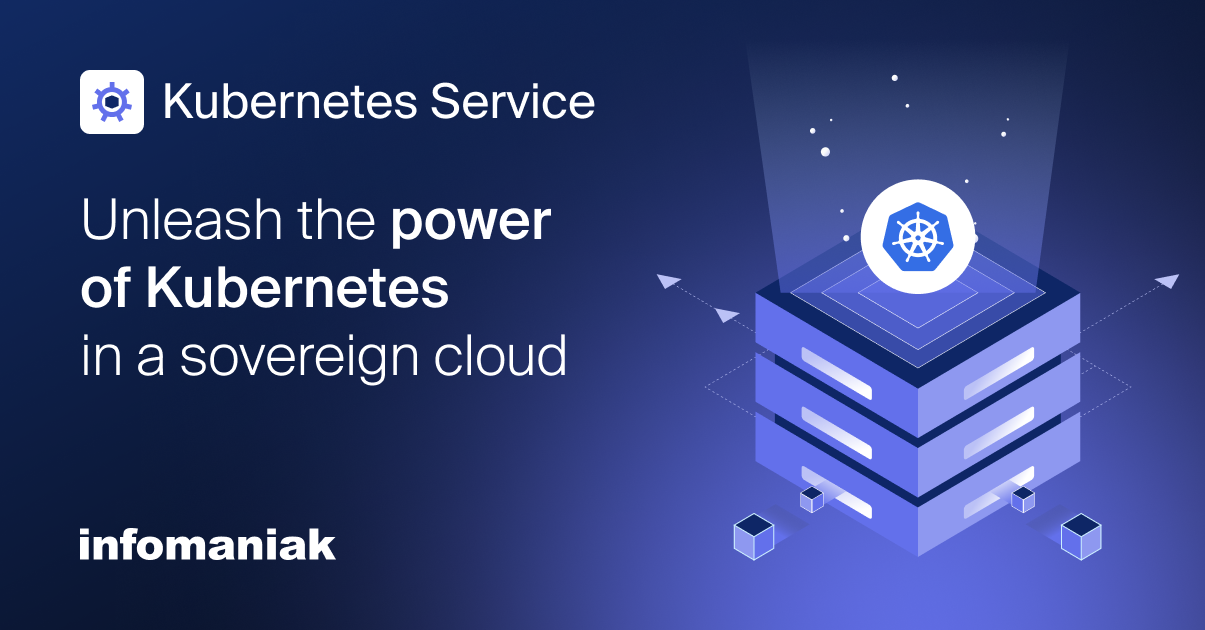
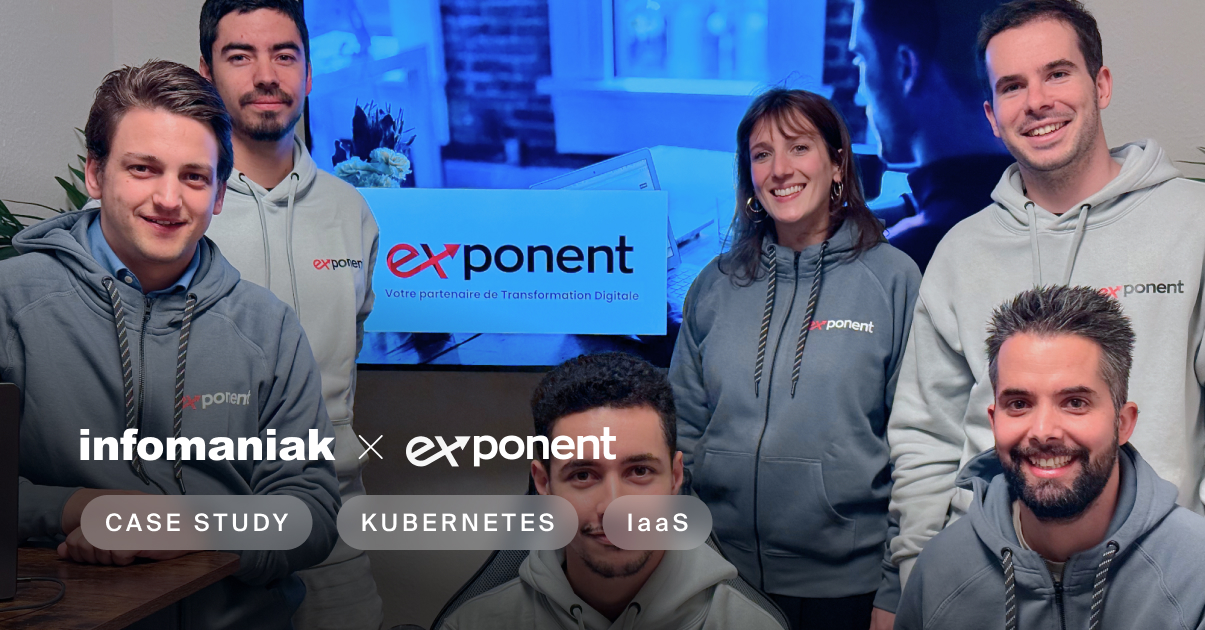
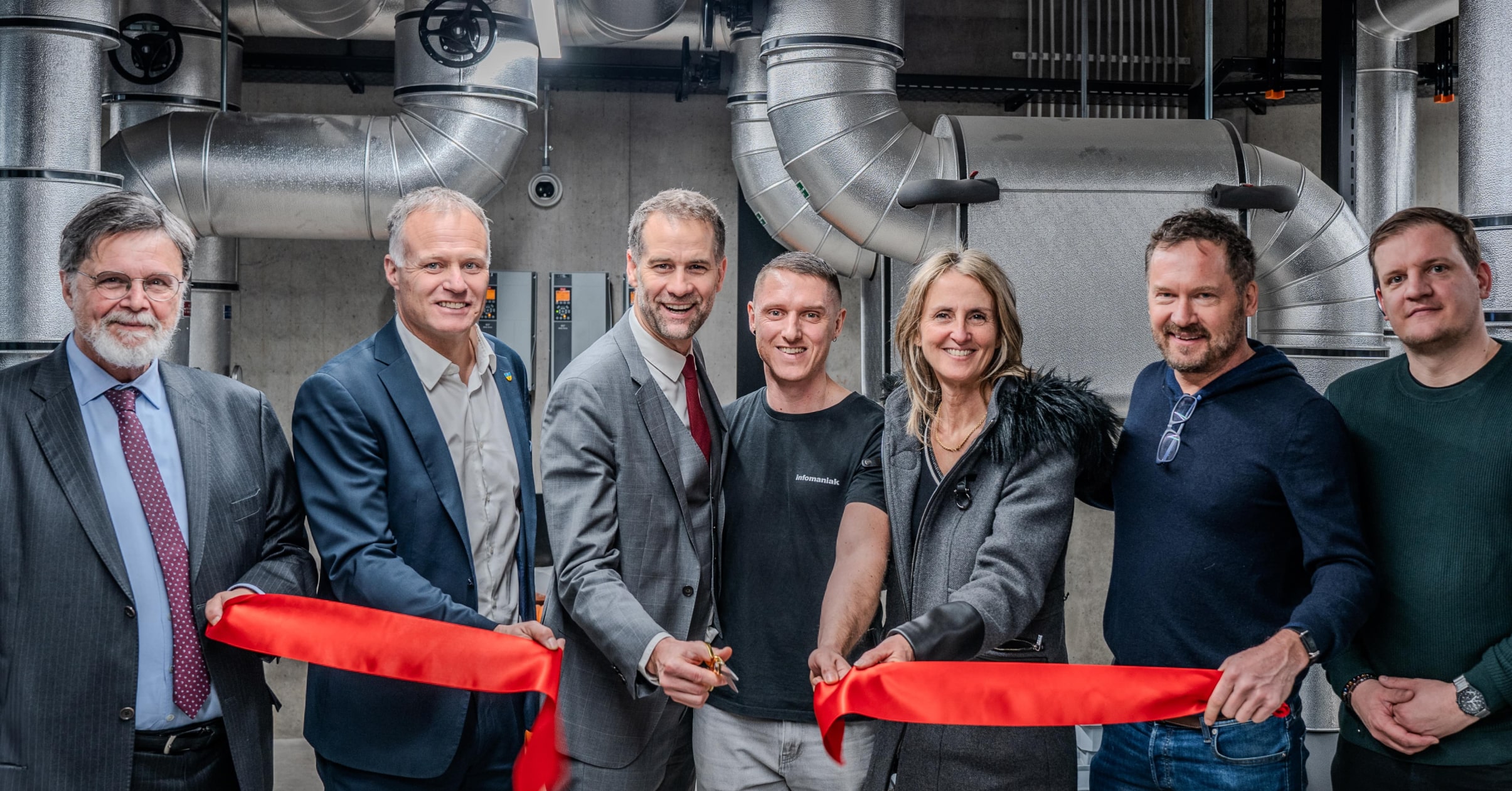
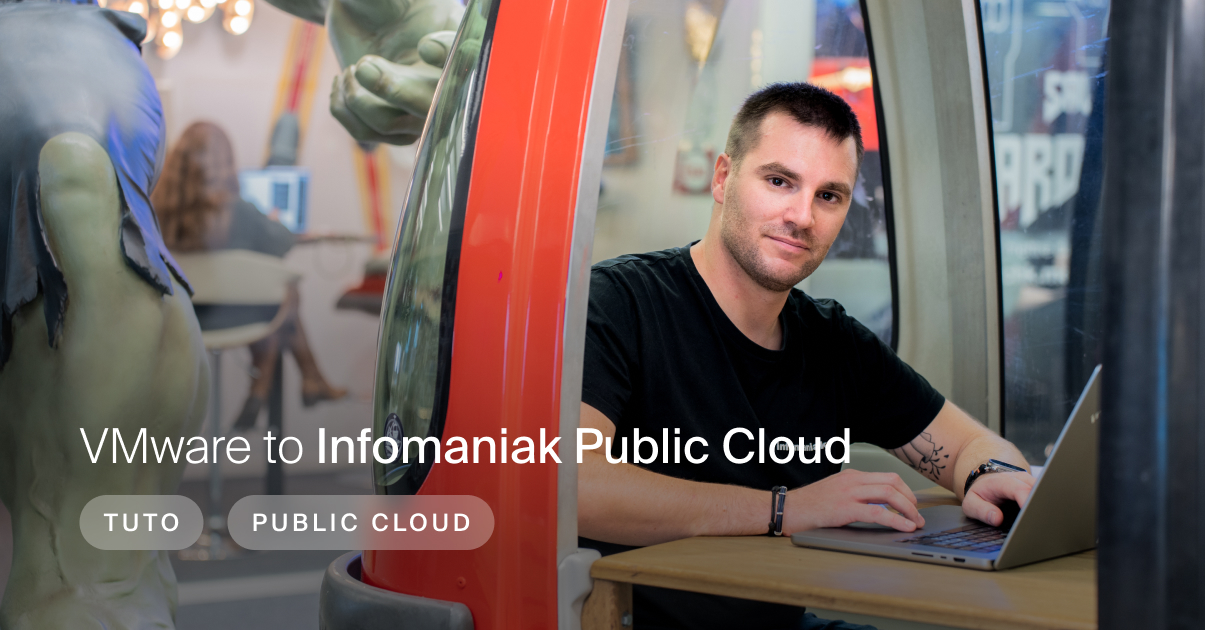

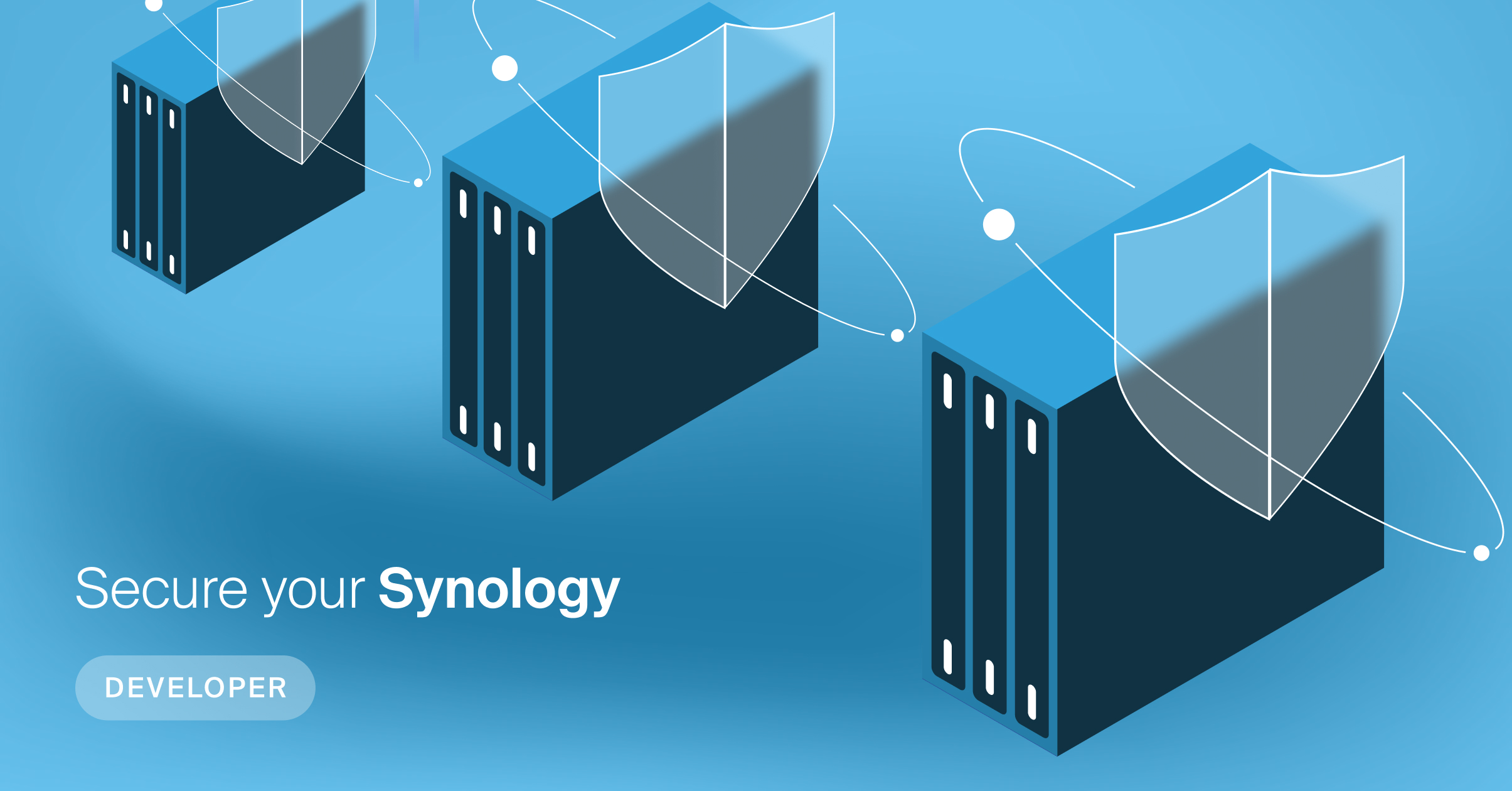
You must be logged in to post a comment.